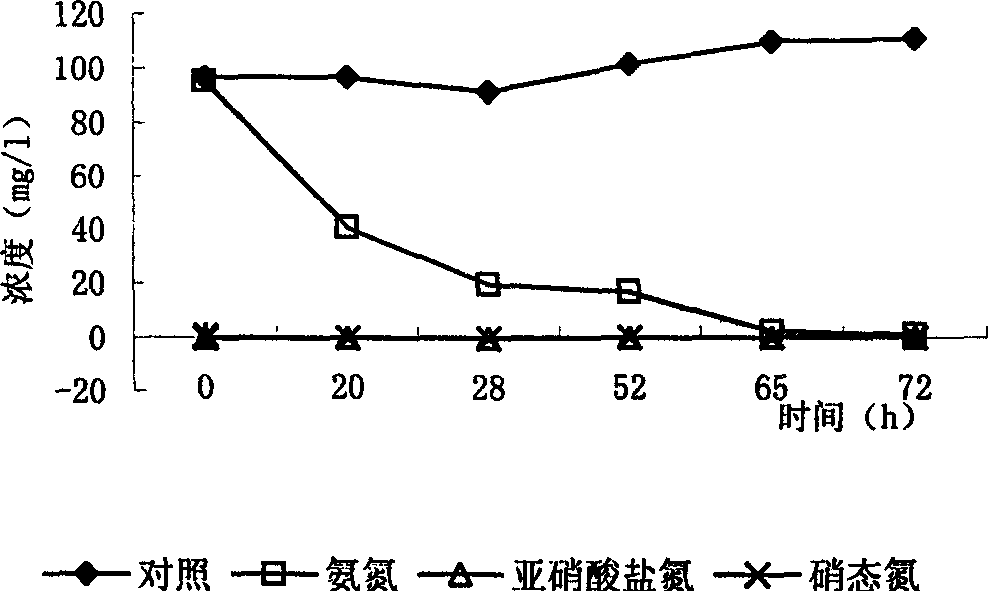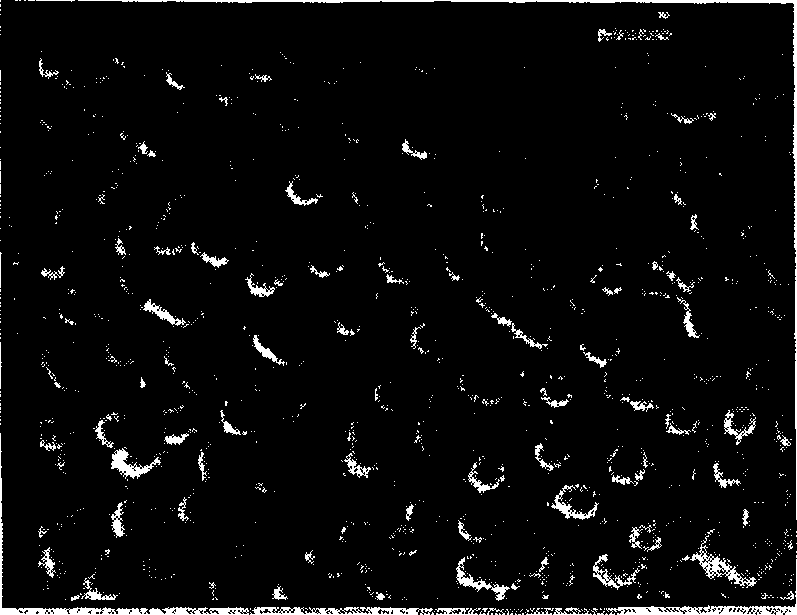Acinetobacter for denitrification and decomposing ammonia in wastewater
A waste water and ammonia nitrogen technology, applied in chemical instruments and methods, bacteria, biological water/sewage treatment, etc., can solve the problems of increasing water treatment costs, limiting popularization and application, and high requirements for cultivation technology, so as to achieve environmental protection and wide application Prospect, effect of high denitrification efficiency
- Summary
- Abstract
- Description
- Claims
- Application Information
AI Technical Summary
Problems solved by technology
Method used
Image
Examples
Embodiment 1
[0032] Enrichment culture and isolation and purification of bacteria
[0033] 1. Enrichment culture of bacteria
[0034] Collect various environmental samples (activated sludge from various sewage treatment plants, ammonia-containing wastewater, domestic sewage, soil from chemical fertilizer plants, cultivated land, and various natural water bodies, etc.), use succinate-containing medium to aerate and enrich One to two weeks, during which time to supplement fresh medium.
[0035] Succinate medium formulation: (NH 4 ) 2 SO 4 0.5g, 2.17g sodium succinate, 50ml Vickers salt solution, add water to dissolve, and finally add distilled water to 1000ml (if it is a solid medium, add 2% agar).
[0036] Vickers salt solution composition: K 2 HPO 4 5.0g, MgSO 4 ·7H 2 O 2.5g, NaCl 2.5g,, FeSO 4 ·7H 2 O 0.05g, MnSO 4 4H 2 O 0.05g, add water to 1000ml.
[0037] 2. Primary screening and secondary screening of bacteria
[0038] Take 1ml of culture solution from the sample enric...
Embodiment 2
[0041] Denitrification bacteria obtained by isolation and purification
[0042] More than 10 strains of bacteria capable of aerobic ammonium oxidation were isolated by the method of limiting dilution and plate streak culture, and 6 strains with better effect were selected from them, which were numbered YY1-YY6 in sequence.
Embodiment 3
[0044] Comparison of denitrification effects of isolated bacteria
[0045] The isolated bacteria were inoculated in liquid medium for culture (in order to shorten the test time and the ammonia nitrogen concentration was halved) at 30°C and 120r / min shaker culture for 24 hours, and the changes in the ammonia nitrogen concentration were detected. The results are shown in Table 1.
[0046] Table 1. Comparison of ammonia nitrogen degradation effects of different strains screened
[0047] Strain number Ammonia nitrogen concentration (mg L -1 )
[0048] Blank control 58.49
[0049] YY-1 11.96
[0050] YY-2 3.58
[0051] YY-3 6.12
[0052] YY-4 13.11
[0053] YY-5 0.0
[0054] YY-6 14.17
[0055] It can be seen from Table 1 that among the isolated bacteria, YY-5 has a better denitrification effect, and was selected by us as the starting strain for the following research.
[0056] The strain was inoculated in liquid culture medium, cultured on a shaker at 30°C and 120r / min fo...
PUM
| Property | Measurement | Unit |
|---|---|---|
| Cod | aaaaa | aaaaa |
| Cod | aaaaa | aaaaa |
| Cod | aaaaa | aaaaa |
Abstract
Description
Claims
Application Information
 Login to View More
Login to View More - R&D
- Intellectual Property
- Life Sciences
- Materials
- Tech Scout
- Unparalleled Data Quality
- Higher Quality Content
- 60% Fewer Hallucinations
Browse by: Latest US Patents, China's latest patents, Technical Efficacy Thesaurus, Application Domain, Technology Topic, Popular Technical Reports.
© 2025 PatSnap. All rights reserved.Legal|Privacy policy|Modern Slavery Act Transparency Statement|Sitemap|About US| Contact US: help@patsnap.com



